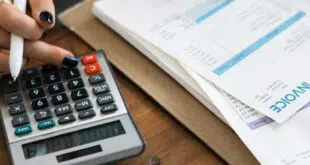Yet another bill-payment study is out, and this one not surprisingly predicts electronic channels will continue displacing mail and other forms of manual payment. More surprising is how soon electronic payments will surpass physical forms of payment: next year, according to Aite Group LLC. Aite forecasts consumers will make 10.2 billion electronic bill payments in 2008 compared with 10.8 billion through “other” channels, notably mail and walk-in facilities. Next year, however, electronic channels could capture 11.4 billion transactions versus 10.3 billion for other. By 2012, Aite forecasts the various electronic channels will capture 64% of consumer bill payments versus 32% for mail and 4% for walk-in payments. Aite's findings are based on qualitative interviews with more than 20 industry executives over the summer. Aite, however, has a warning for banks and credit unions that offer consolidated bill payments through their online banking sites. Despite all the attention on their efforts of late, financial institutions' bill-pay sites are poised to lose ground to the so-called biller-direct channel?the online and telephone-based payment channels offered directly by utilities, telephone companies, and other billers. “The biller-direct channel is not going to go away, in fact we think it is going to gain market share,” says Gwenn Bézard, research director at Boston-based Aite Group. Aite estimates consolidator sites had an estimated compound annual growth rate of 20.3% from 2004-2008 and forecasts growth of 13.1% for 2008-2012. Not bad, but the biller-direct sites have estimated and forecasted compound annual growth rates for the same periods of 25.2% and 14.1%, respectively. Biller-direct Web and phone-based channels will capture 67% of electronic transactions this year compared with 33% for consolidator sites, and the direct model will increase its share to 68% in four years, the report says. Bézard cites several reasons for biller-direct's continued dominance. “Banks were very aggressive in marketing bill pay a few years ago, I don't think they are as aggressive today,” he says. Another important advantage for direct billers is payment confirmation: consumers put more stock in the posting notices they receive from billers than they do in the notices they receive from financial institutions' bill-pay services. “At the end of the day, you get a receipt from the biller,” he says. “At this time it's not something the consolidator model can deliver.” After a round of heavy price competition, banks today are trying to figure out how to generate bill-pay revenues from their online customers, a trend also noted in a recent report from TowerGroup Inc. (Digital Transactions News, Aug. 27). TowerGroup, Javelin Strategy & Research, and Aite note that financial institutions see last-minute, or expedited, payments as one of the few remaining sources of bill-pay fee revenues. But Aite predicts banks will recover through expedited payments only 3% to 5% of their costs to offer free bill-pay by 2012. And Javelin predicts banks can earn anywhere from $5 billion to $6.25 billion from fees for expedited payments over the next five years, but only if they can wrest market share from billers (Digital Transactions News, Sept. 17). Given these headwinds, rather than try to recoup bill-pay costs, banks and credit unions should put more marketing dollars into their online sites to drive cross-selling and overall product sales, according to Bézard. “Your time is better spent enhancing your marketing capacities,” he says. Credit cards, meanwhile, are becoming more popular with consumers for bill-pay, the report indicates. Automated payments charged to card accounts along with one-time card payments made through Web sites and call centers will grow to an estimated 26% of all electronic bill-pay transactions by 2012 compared with 23% this year, the report says. “You have more control with a card,” says Bézard. “It's easier to cancel. The credit card infrastructure is set up to enable consumers to challenge payments they don't agree with.”
Check Also
The Request for Payment’s Promise for Real-Time Payments
Request for payment on the RTP network from The Clearing House Payments Co. LLC has …





